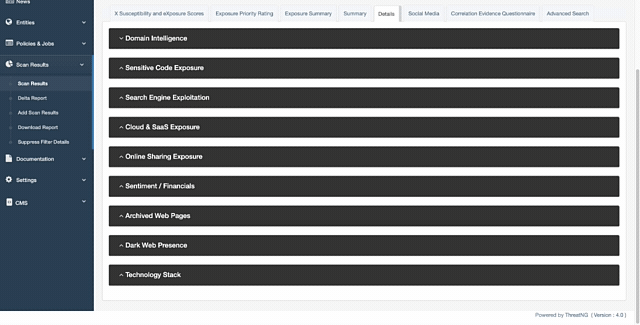DNS Intelligence
In cybersecurity terms, DNS Intelligence refers to the collection, analysis, and actionable insights derived from DNS data to identify, understand, and mitigate cyber threats.
It involves monitoring and analyzing various DNS activities and records, such as:
DNS queries and responses: Includes tracking which domains and subdomains are being accessed, by whom, and from where.
DNS records: These records encompass information about domain names, IP addresses, mail servers, name servers, and other DNS record types.
DNS traffic patterns: This involves analyzing DNS queries' volume, frequency, and types to detect anomalies or suspicious behavior.
How DNS Intelligence is used in Cybersecurity
DNS Intelligence plays a critical role in both defensive and offensive security operations:
Defensive Use Cases:
Threat detection and prevention: Identifying malicious domains, phishing attempts, and other threats by correlating DNS data with threat intelligence feeds and behavioral analytics.
Incident response: Investigate security incidents by tracing DNS activity to identify compromised systems, command-and-control servers, and data exfiltration attempts.
Network visibility and asset management: Gaining a comprehensive understanding of the organization's DNS infrastructure, including active domains, subdomains, and associated IP addresses.
Policy enforcement and compliance: Monitoring DNS traffic to ensure adherence to security policies and regulatory requirements.
Offensive Use Cases:
Reconnaissance and footprinting: Gathering information about a target's network infrastructure, including potential vulnerabilities and entry points.
Social engineering and phishing: Identifying domains that can be used for impersonation or targeted attacks.
Malware analysis: Tracking DNS activity of malware to identify command-and-control servers and other infrastructure used in attacks.
Critical Benefits of DNS Intelligence
Early threat detection: DNS Intelligence can often provide an early warning signal of an attack before other security tools, as many cyberattacks involve DNS at some stage.
Proactive defense: Analyzing historical DNS data helps identify patterns and trends that can be used to predict and prevent future attacks.
Improved incident response: DNS data provides valuable forensic evidence for investigating and remediating security incidents.
Enhanced network visibility: Provides a more complete picture of the organization's attack surface and potential vulnerabilities.
In conclusion, DNS Intelligence is a valuable asset for any cybersecurity program. By leveraging DNS data, organizations can gain deeper insights into their network activity, identify and mitigate threats more effectively, and strengthen their overall security posture.
ThreatNG's Role in Enhancing DNS Intelligence
ThreatNG, with its multi-faceted approach to external attack surface management and digital risk protection, significantly enhances DNS Intelligence's value for defensive and offensive cybersecurity.
1. Enrichment and Contextualization of DNS Data:
Domain Intelligence Module: ThreatNG’s DNS Intelligence capability provides a foundation by continuously gathering and analyzing DNS records (A, MX, NS, TXT, etc.). This helps identify active domains, subdomains, associated IP addresses, and potential misconfigurations.
Complementary Solutions Integration: ThreatNG can integrate with external threat intelligence feeds, DNS security solutions, and passive DNS databases to enrich its DNS Intelligence with additional contexts, such as known malicious domains, historical DNS data, and reputation scores.
Investigation Modules: By correlating DNS Intelligence with findings from other modules (Social Media, Sensitive Code Exposure, Search Engine Exploitation, etc.), ThreatNG can paint a more comprehensive picture of potential threats and vulnerabilities.
2. Proactive Threat Detection & Mitigation:
Continuous Monitoring: ThreatNG monitors DNS changes, new subdomains, and certificate updates. Any anomalies or suspicious activities are flagged, enabling security teams to take swift action.
Intelligence Repositories: ThreatNG’s intelligence repositories, containing information on dark web activities, compromised credentials, and known vulnerabilities, add another layer of threat detection. For instance, if a subdomain is mentioned in a dark web forum, ThreatNG can alert security teams.
Risk Assessment & Prioritization: ThreatNG’s capabilities in assessing BEC, phishing, and ransomware susceptibility can be applied to domains and subdomains discovered through DNS Intelligence. It allows security teams to prioritize their response based on a threat's potential impact.
3. Examples of DNS Intelligence in Action:
Detecting Shadow IT: ThreatNG uncovers a previously unknown subdomain to the organization. Further investigation using other modules might reveal it’s an unsanctioned cloud service, potentially exposing sensitive data.
Identifying Phishing Domains: ThreatNG's DNS Intelligence, coupled with its phishing susceptibility assessment, flags a newly registered domain that closely mimics the organization's domain, likely intended for a phishing attack.
Uncovering Data Leaks: DNS Intelligence might discover subdomains pointing to exposed cloud buckets. By analyzing the bucket contents, ThreatNG could identify sensitive data leaks.
Compromised Credentials: If ThreatNG’s intelligence repositories reveal compromised credentials associated with a specific subdomain, it could indicate a potential breach and warrant immediate investigation.
4. Working with Complementary Solutions
ThreatNG can integrate with various cybersecurity solutions to enhance its DNS Intelligence capabilities and provide more comprehensive protection. Some examples include:
SIEM (Security Information and Event Management): ThreatNG can feed its DNS Intelligence into a SIEM system to correlate DNS data with other security events, providing a more holistic view of the threat landscape.
SOAR (Security Orchestration, Automation, and Response): By integrating with a SOAR platform, ThreatNG can automate incident response workflows based on DNS Intelligence, enabling faster and more efficient remediation.
Threat Intelligence Platforms: ThreatNG can leverage external intelligence feeds to enrich its DNS Intelligence and provide more context on potential threats.
ThreatNG's comprehensive approach to DNS Intelligence, combined with its external attack surface management, digital risk protection, and security ratings capabilities, significantly enhances an organization's ability to detect, understand, and mitigate cyber threats related to its DNS infrastructure. By continuously monitoring DNS data, correlating it with other intelligence sources, and providing actionable insights, ThreatNG empowers security teams to proactively defend their organization against a wide range of cyberattacks.


